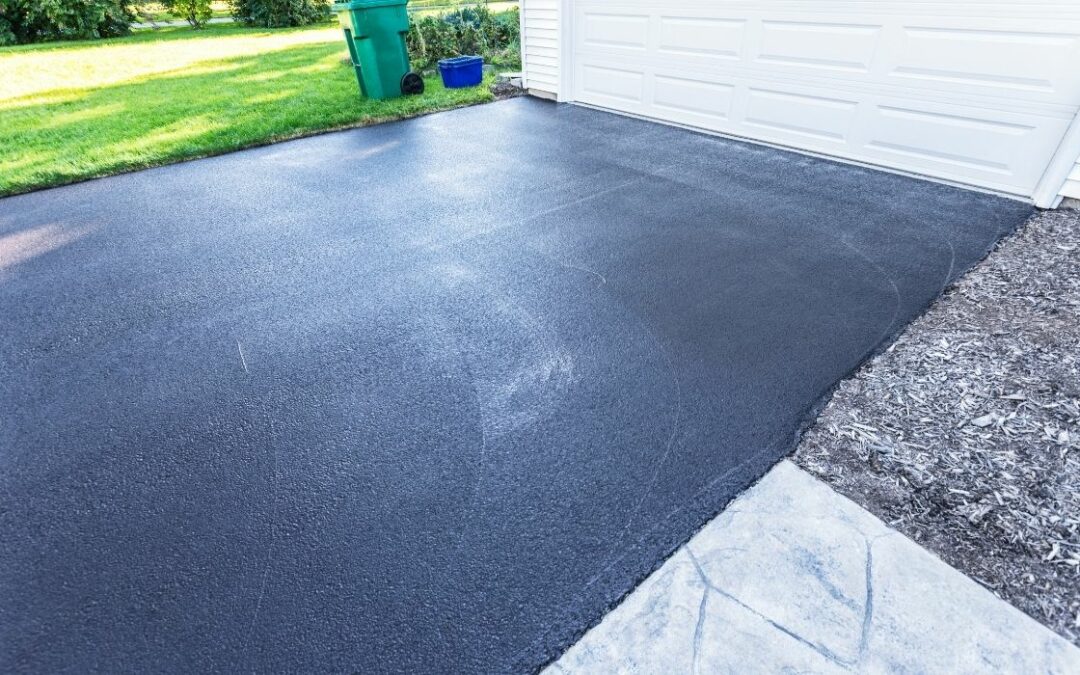Hot Mix Asphalt: A Sustainable Option for Pavement
Hot Mix Asphalt (HMA) has emerged as a leading lasting choice for pavement solutions, offering a myriad of environmental benefits and cutting-edge modern technologies. As the need for environment-friendly building and construction methods grows, discovering the subtleties of HMA's sustainability can provide beneficial insights right into the future of pavement options.
Environmental Advantages of Hot Mix Asphalt

Moreover, Warm Mix Asphalt assists to mitigate metropolitan heat island impacts. Its dark color soaks up sunlight, lowering the amount of warmth showed back right into the ambience contrasted to lighter-colored sidewalks. This can reduce ambient temperature levels in urban locations, decreasing the demand for cooling and ultimately minimizing energy usage.
On top of that, Hot Mix Asphalt adds to boosted stormwater monitoring. Its porous nature allows water to infiltrate the pavement and charge groundwater supplies, reducing runoff and the danger of flooding. These ecological advantages make Warm Mix Asphalt a sustainable choice for paving highways and roads.
Energy Efficiency in HMA Production
Is power effectiveness a vital variable in the production of Hot Mix Asphalt (HMA)? Power plays a substantial function in the production of HMA, influencing both expense and environmental sustainability. One key facet of energy efficiency in HMA manufacturing is the use of cozy mix asphalt (WMA) modern technologies.
Moreover, developments in plant technologies have actually resulted in even more energy-efficient HMA production procedures. Modern plants are created with features like recycled asphalt sidewalk (RAP) processing capacities, effective burner systems, and boosted insulation, all adding to energy financial savings. By enhancing energy use in HMA manufacturing, the sector can reduce its carbon footprint while keeping top notch pavement products. Power effectiveness is, therefore, a critical consideration in ensuring the sustainability of Warm Mix Asphalt production.
Recyclability of Hot Mix Asphalt
The recyclability of Warm Mix Asphalt (HMA) is a crucial aspect of its sustainability and long-lasting ecological influence. HMA is one of one of the most recycled products in the USA, with over 100 million heaps of redeemed asphalt pavement (RAP) being reused every year in brand-new sidewalk construction. Recycling HMA provides numerous ecological benefits, such as decreasing the requirement for virgin products, lowering power consumption during production, and decreasing the quantity of waste sent to landfills.
The process of recycling HMA involves crushing the existing pavement, crushing it right into smaller sized pieces, and mixing it with brand-new accumulation and asphalt binder to produce a recycled mix. In general, the recyclability of HMA plays a significant duty in advertising sustainable techniques within the sidewalk market.

Long-Term Performance of HMA
Asphalt pavements show durability and resilience over an extended period, showing the long-lasting performance of Hot Mix Asphalt (HMA) The durability of HMA can be associated to its capability to stand up to rush hour lots, rough climate condition, and the results of aging. Researches have actually revealed that well-designed and appropriately built HMA pavements can last for twenty years or even more with routine upkeep. The secret to making best use of the lasting efficiency of HMA hinges on utilizing premium materials, following ideal techniques in building and construction, and carrying out efficient maintenance strategies. Correct water drainage, routine evaluations, and timely fixings are necessary for protecting the structural honesty of HMA sidewalks in time. Additionally, innovations in HMA modern technology, such as making use of polymer-modified binders and warm mix asphalt, have actually even more enhanced the longevity and longevity of HMA pavements. By focusing on high quality construction and upkeep methods, HMA continues to confirm itself as a sustainable and cost-effective remedy for resilient pavement framework.

HMA: Longevity and Sustainability
Showing both sturdiness and sustainability, Hot Mix Asphalt (HMA) has actually become a keystone in the building of long-lasting sidewalk infrastructures - commercial parking lot paving. HMA's longevity stems from its ability to stand up to hefty loads, extreme weather problems, and high web traffic volumes, making it a trustworthy choice for highways, highways, and flight terminal paths. The structure of HMA, which typically includes accumulations, binder, and filler, plays an important duty in enhancing its durability and resistance to tear and use
In addition, HMA's sustainability hinges on its recyclability and energy-efficient production procedure. The ability to reuse recovered asphalt view sidewalk (RAP) in new HMA mixes minimizes the need for virgin materials and lessens the ecological influence of pavement building and upkeep. In addition, the energy efficiency of creating HMA depends on its reduced blending temperature levels compared here to other pavement materials, causing lowered energy consumption and greenhouse gas discharges.
Final Thought
In conclusion, warm mix asphalt (HMA) uses a sustainable service for sidewalk with its eco friendly characteristics. HMA's recyclability, power performance in production, and long-term longevity make it a green choice for roadway construction.
HMA is one of the most recycled materials in the United States, with over 100 million tons of reclaimed asphalt sidewalk (RAP) being reused annually in brand-new pavement building and construction.The process of reusing HMA includes milling the existing sidewalk, crushing it right into smaller items, and mixing it with brand-new aggregate and asphalt binder to develop a recycled mix.Asphalt pavements show sturdiness and resilience over a prolonged period, showing the long-term efficiency of Warm Mix Asphalt (HMA) Furthermore, advancements in HMA innovation, such as the use of polymer-modified binders and warm mix asphalt, have actually even more boosted the sturdiness and long life of HMA sidewalks. The ability to reuse redeemed asphalt pavement (RAP) in new a fantastic read HMA combinations lowers the demand for virgin products and decreases the environmental effect of sidewalk construction and upkeep.